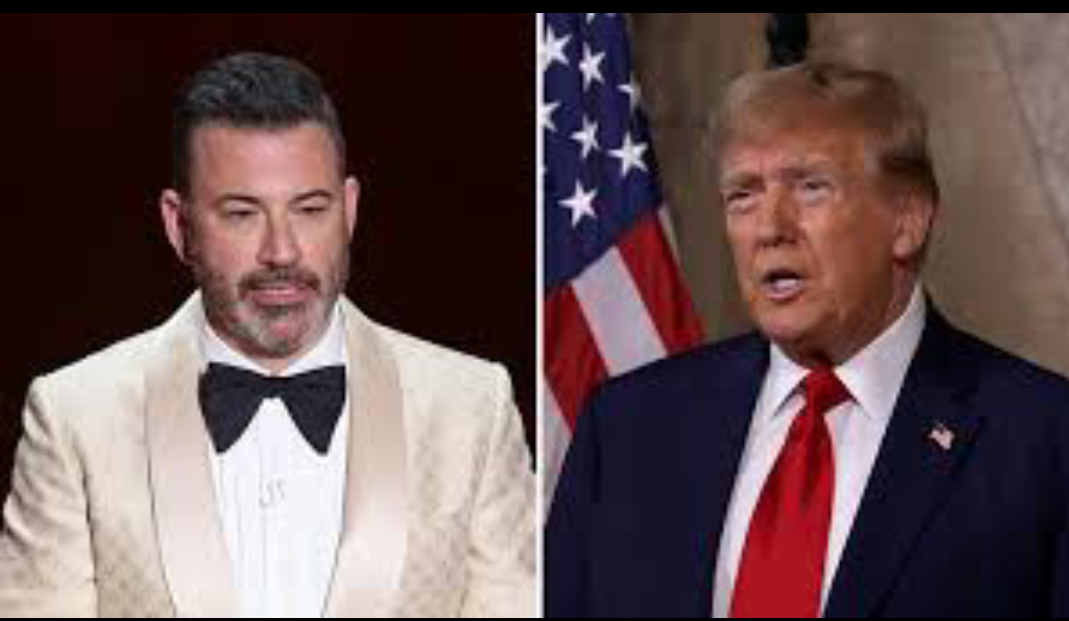NEWS
Breaking News: Jimmy Kimmel Spoils Trump’s Party With a Pointed Jeffrey Epstein Observation

Breaking News: Jimmy Kimmel Spoils Trump’s Party With a Pointed Jeffrey Epstein Observation
Late-night host Jimmy Kimmel recently turned his spotlight on Donald Trump in a biting monologue on Jimmy Kimmel Live!, using a party the former president hosted as the springboard for a much sharper critique involving the now-infamous financier Jeffrey Epstein. The moment stands out as an example of Kimmel blending news, humor and pointed political commentary.
On the show, Kimmel referenced a recent celebration thrown by Trump—the type of image-rich, photo-op affair long associated with his public persona. Kimmel used the party-setting to pose a question: if the former president can throw a high-visibility event while crucial government benefits are expiring, what does that say about his priorities? One article noted: “The late-night host ripped the president for throwing a party as essential food benefits were set to expire.”
That alone would have made for typical late-night fare. But Kimmel went further: he tied the festivity to deeper, ongoing scrutiny of Trump’s past and his connections with Epstein.
Central to Kimmel’s critique was a letter from 2003—allegedly written by Trump to Epstein—that resurfaced publicly, which has triggered renewed interest in Epstein-related documentation. According to reporting, the letter is shaped as a nude female silhouette with Trump’s signature placed suggestively; the form and tone of the note have drawn heavy scrutiny.
Kimmel used the letter as a symbol of what he claims is Trump’s unwillingness to release full records or explain his past. “One thing we know for sure is that Donald Trump doesn’t want us to see these files, which to me is all you need to know,” Kimmel said.
He also mocked the presidential denial that the note was in Trump’s style, arguing via clips that many of the phrases match Trump’s speech patterns.
Kimmel further criticized the handling of the so-called “Epstein files” by Attorney General Pam Bondi, pointing out that when asked in Senate hearings about photographs and documents linking Trump and Epstein, her answers were evasive.
Why did Kimmel choose the party + Epstein link? Several key reasons:
Contrast of spectacle vs seriousness: The imagery of a lavish party juxtaposed with the expiration of essential benefits (food assistance, furloughed worker pay) sharpens the critique of priorities.
Visual metaphor: The party becomes more than a backdrop—it serves as a metaphor for opacity, distraction and misdirection.
Renewed focus on accountability: The resurfacing of the letter and the continuing questions about Epstein’s network give the monologue a timely anchor beyond mere jokes.
Political weaponisation of entertainment: Kimmel is part of a genre of political satire where late-night hosts become quasi-journalists, weaving comedy and investigation.
Kimmel referred to Trump as “our Doodler in Chief” when talking about the note.
On Bondi’s evasiveness, he quipped: “Did you eat the Polaroids yourself, Attorney General?”
On the letter: “That is not a birthday note. That is a signed confession.”
On the supposed resistance to releasing files: “It’s like walking in on your teenager. He closes the laptop, pulls up the covers. You don’t need to check the browser history.”
Kimmel and Trump have long had a combative relationship. From fire-and-brimstone critiques of healthcare policy to jabs at Trump’s social media presence, Kimmel has used his platform to challenge the former president’s claims and persona.
The Epstein case remains a swirling cluster of allegations, unanswered questions and document releases. Trump’s past association with Epstein, including socialising at Epstein’s properties and thanking him publicly in media interviews, has been part of the record. Kimmel brought this into the discussion: for example, referencing Trump once describing Epstein as a “terrific guy … beautiful women on the younger side.”
Media spotlight on the files: The attention Kimmel’s segment generated may drive more public pressure for transparency around Epstein-linked documents and Trump’s connections.
Late-night as political arena: The segment reflects how late-night shows are now significant platforms for political commentary—not just entertainment.
Image vs substance in politics: The party‐image of Trump is being used by critics as proof of what they deem deeper failings (accountability, transparency, alignment of priorities).
Public memory & narrative control: Kimmel’s linking of the party + Epstein illustrates how public figures’ past actions continue to reverberate, especially when resurfaced with a new framing.
By using the backdrop of a party thrown by Donald Trump, Jimmy Kimmel was able to deliver more than a joke—he used comedy as a lens to unearth serious concerns around Jeffrey Epstein’s legacy, the handling (or mishandling) of relevant documents, and what it says about Trump’s priorities and transparency.
Regardless of one’s political alignment, the segment underlines how entertainment and political commentary increasingly merge—and how moments of spectacle can be re-interpreted as moments of accountability.












